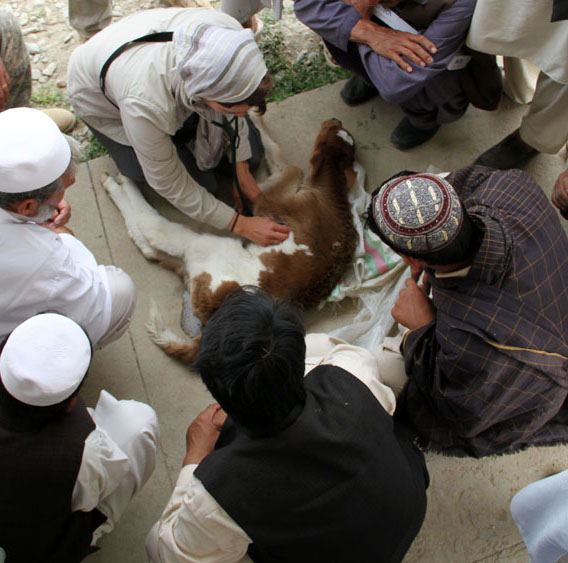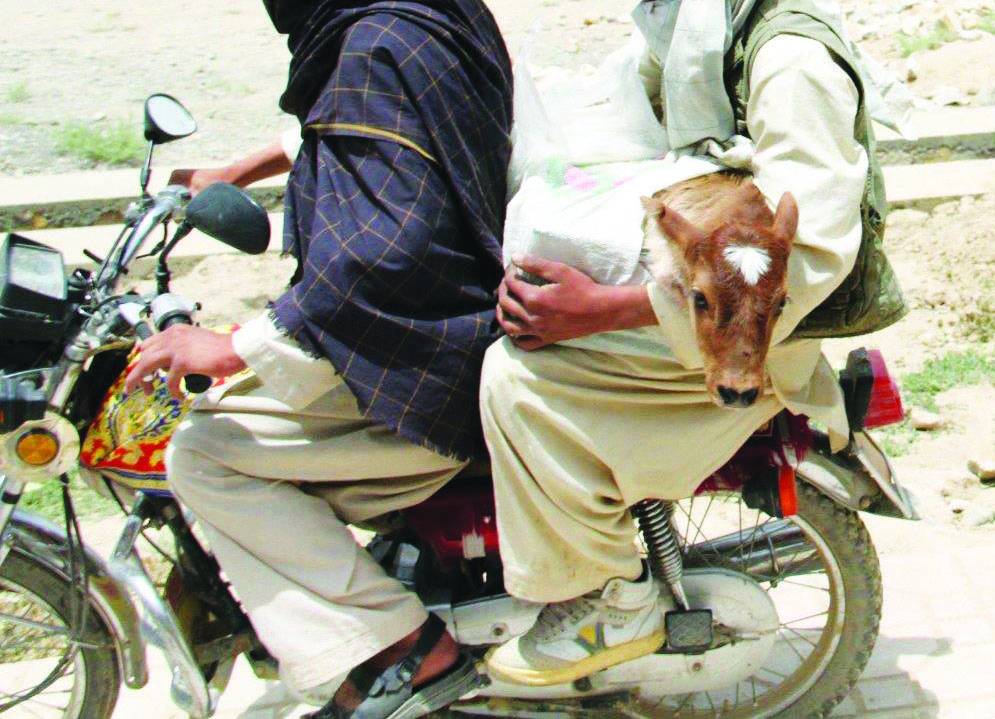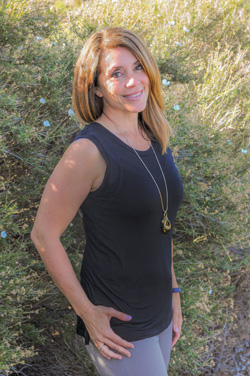ALBUQUERQUE, N.M. — Dr. Melissa Finley’s credibility was on the line as she worked, surrounded by skeptics, to save the life of a dehydrated calf in rural Afghanistan. As a woman and a foreigner she had to earn the trust of the villagers she was trying to help.

“They had never given fluids before, so I sent them to the market to get dextrose solution, a baby bottle, catheter and antibiotics. I had to reassure them I wasn’t going to kill the calf, that they could trust me,” she said. “When the calf started to come around I had instantaneous respect.”
Finley has been working in Afghanistan since 2009 as a member of Sandia National Laboratories’ International Biological and Chemical Threat Reduction organization (IBCTR). A seasoned veterinarian, she travels throughout the country teaching safe laboratory practices, providing continuing veterinary education to reduce the spread of infectious disease and collaborating with the government’s animal health agencies.
The hiring of a vet by a national laboratory “was off-the-charts nontraditional from what I was told,” Finley said. But there is a tie between infectious diseases of animals, public health and bioterrorism. Veterinarians play an important role by encouraging and helping governments to implement animal-health policies.

Veterinary medicine is linked to biological threat reduction because about 75 percent of the agents that can be used as biological weapons are animal in origin. Finley and her Sandia colleagues establish biorisk management practices at laboratories worldwide and improve the ability of veterinary and public health workers to reduce the potential for criminal acquisition of biological agents such as Bacillus anthracis, Brucella sp. and foot and mouth disease virus.
“The most likely repository for biological material is a laboratory. What happens when you secure all of the laboratories? You are forced to think more broadly about biorisk management and reducing the biological threat,” Finley said.
A possible reservoir of biological material exists in naturally occurring infectious disease outbreaks. “If you target animal populations and help countries prevent and control infectious diseases then there is less available in the environment for acquisition and fewer positive samples to be sent to laboratories for analysis,” she said. “I like to think we help developing nations bridge the gap between biosecurity and veterinary medicine.”
An early love of animals
Finley is an Albuquerque native who grew up around animals. “We had dogs and my grandfather had a small farm with chickens, pigs and a cow or two,” she said. In high school Finley decided she wanted to be a vet. She did a three-year pre-veterinary program at New Mexico State University then went to Colorado State University where in four years she earned a Doctor of Veterinary Medicine, or DVM.

Finley wanted to specialize in horses and landed a yearlong internship in private practice at an exclusive equine medical center in Los Olivos, California. She worked on horses belonging to the renowned thoroughbred trainer D. Wayne Lukas, singers Jackson Browne and Wayne Newton and rapper MC Hammer. Her next stop was Cornell University in Ithaca, New York, where she did a two-year residency in large-animal internal medicine. “I was told the caseload was primarily horses, but when I got there it was dairy cattle,” she said. “I came to really appreciate bovine medicine. It was a whole new area of interest.”
After a brief stint in private practice, Finley joined the University of California, Davis, as a post graduate researcher studying the impact of Neospora caninum, a protozoan, on bovine abortions. “It was an important project because N. caninum is one of the leading causes of abortion in cattle. It was my introduction into using animals for laboratory purposes,” she said. “But it was tough because I got attached to all of the cattle, even the one that kicked me more than once.”
Finley moved on to Kansas State University as an assistant professor in clinical sciences in the College of Veterinary Medicine. Two years later she became a teaching assistant in the college’s department of anatomy and physiology, and pursued her doctorate. “I enjoyed working with animals but also found the research component interesting,” she said. “My research career started there.”
Finley’s postdoctoral fellowship was at the Salk Institute for Biological Studies in La Jolla, California. “I was shaping my career to balance clinical relevance and research,” she said. “I wanted to bridge fundamental science and clinical practice.”
Mother was right
On a visit home to Albuquerque, Finley’s mom suggested she look into jobs at Sandia. “I told her there weren’t any positions at Sandia for a veterinarian with a graduate degree in cellular physiology. It is an engineering laboratory,” she said. “I decided to look anyway and show her.”
But there was one job. Sandia was looking for someone with a biosciences background to work in global security and biological weapons nonproliferation. Finley was hired in 2005. “Biological threat reduction was the main goal, but the focus was on fundamental biosafety and biosecurity,” she said.
Finley has traveled to about two dozen countries but spent most of her time in Afghanistan and Iraq. She focused on Afghanistan because she could work closely with its veterinary services and support IBCTR’s mission there. She has made 21 trips to the country.
Finley developed a comprehensive training course to enhance veterinarians’ ability to detect and control infectious diseases. The country’s challenges include rampant rabies, brucellosis and anthrax.
Sandia’s strategy in Afghanistan is to piece small projects into a large, comprehensive program. “We started with fundamental work in laboratory biorisk management. We then looked at naturally occurring outbreaks as repositories for biological materials,” said Finley, whose field experience contributed to the development of Sandia’s portable laboratory platforms Syndromic SpinDx and BaDx.
Sandia has hired two other veterinarians: Van Brass and Carrie McNeil, who work in Mali and Southeast Asia, among other places.
Scary moments in the field
Finley, who had to conquer a serious fear of flying to do her job, has had a few scary moments in the field. “You have to be a little scared or you’re not aware,” she said. She recalls rickety helicopter rides over Afghan mountains and military escorts into danger zones. “I got used to it, how body armor fits, how to wear a helmet,” she said. “I know the do’s and don’ts.”
But she said she wouldn’t trade her Sandia work for anything else the veterinary world has to offer. “I never dreamed I would have a job like this,” she said. “It’s been exciting for me as a veterinarian and as a person who works in global security. I’ve watched areas like Afghanistan and Iraq transition from war to sovereignty. It’s part of history.”